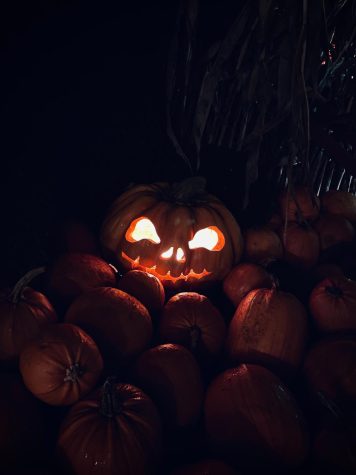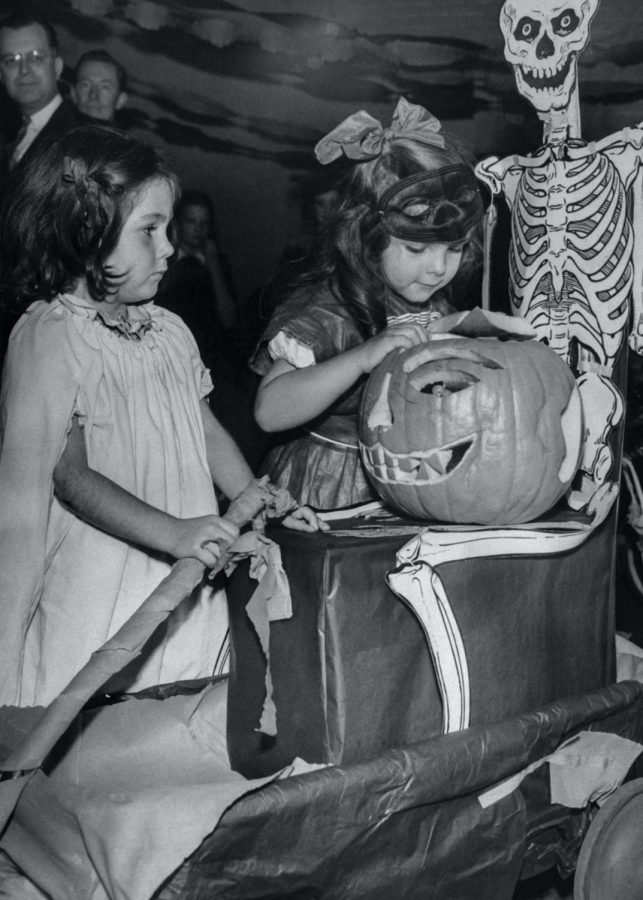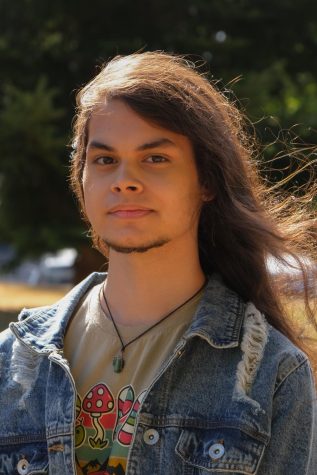The Spooky History of Halloween
October 31, 2022
With ghostly shrieks and candied sweets, kids in costumes flood the streets. Pumpkins cut and lit by candle, tune in to horror on every channel. It’s that time of the year again, the Halloween season.
From watching horror movies to partying, we all know how we like to celebrate this special day, but have you ever stopped to think about why we have these traditions and celebrate the holiday in the first place?
Halloween and a lot of its traditions seem to have descended from the ancient Celtic festival of Samhain (pronounced SAH-win), which was celebrated to mark the end of the harvest season and welcome the Celtic new year. It was believed by the Celts that during this time, the line separating the worlds of the dead and living became blurred. It was said that mischievous spirits would come back down to Earth in order to cause trouble and damage crops. To counteract this, offerings would be put out for the visiting spirits. They would also sometimes sacrifice crops and cattle in special bonfires to appease and protect from especially malicious beings. Some would even wear animal skins and heads to trick the spirits into thinking they weren’t human.
Another tradition that was used to keep the Celts and other people of the British Isles out of harm’s way was to carve faces into turnips and light the inside with a candle. It was common for folks to hang them up outside their house or use them as lanterns. Although it was used to ward off malicious spirits in general, it was also used to specifically protect from a mythological being known as Stingy Jack. As you may have guessed, this is where the practice of pumpkin carving came from.
Up until Samhain (and many other holidays), people would perform something known as “mumming”. Mumming was the tradition of dressing up in costume and visiting people door-to-door in order to sing, dance, and put on plays in exchange for food. This is widely considered the origin of trick-or-treating and costume-wearing.

The question now is: How exactly did these traditions come from the British Isles and across the sea to the United States?
As Christianity began to spread throughout the British Isles, it slowly started to combine with already existing traditions. The widely believed theory is that the church made November 2nd a Holiday known as All Souls’ Day in order to replace Samhain. They were both celebrated very similarly, with bonfires, costumes, and huge celebrations. This holiday was also known as All-Hallowmas, which is why we give Halloween the name All-Hallows Eve.
Halloween first came over to the Americas during British colonization. Although not widely celebrated, the common concentration of celebrations could be found more in the southern colonies as opposed to the northern. The nationalization of Halloween can be attributed to Irish immigrants coming to the United States in the 19th century and popularizing the holiday.

Little by little, Halloween parties became more and more common because of efforts being made to make the holiday more based on community-building rather than pranks and witchcraft. Between 1920-1950, trick-or-treating was adopted as another way for communities to celebrate and spend the holiday together and eventually evolved into the Halloween we know and love today.



